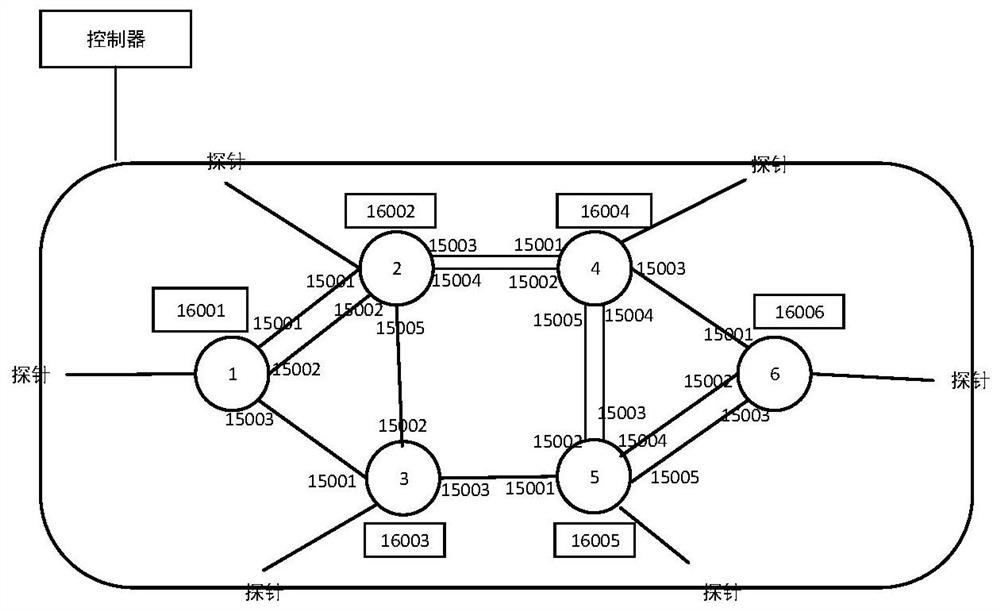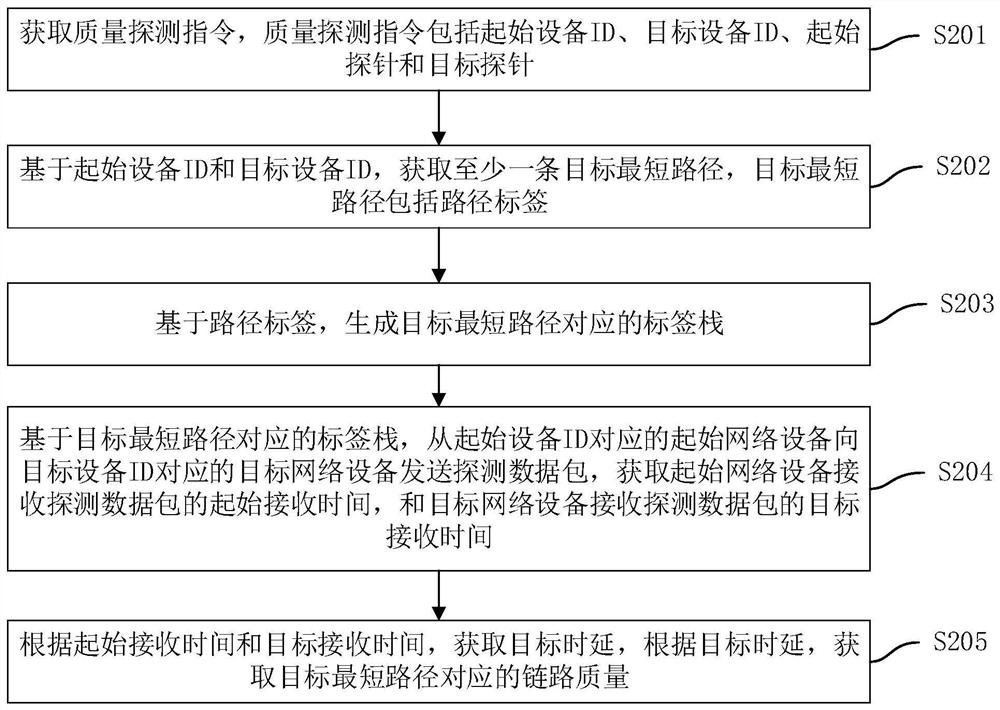Full-amount link quality detection method and device, computer equipment and storage medium
A link quality and detection method technology, which is applied in the field of full link quality detection methods, computer equipment and storage media, and devices, can solve the problems of not being able to traverse all links, and unable to truly reflect network quality conditions.
- Summary
- Abstract
- Description
- Claims
- Application Information
AI Technical Summary
Problems solved by technology
Method used
Image
Examples
Embodiment Construction
[0033] The following will clearly and completely describe the technical solutions in the embodiments of the present invention with reference to the accompanying drawings in the embodiments of the present invention. Obviously, the described embodiments are some of the embodiments of the present invention, but not all of them. Based on the embodiments of the present invention, all other embodiments obtained by persons of ordinary skill in the art without creative efforts fall within the protection scope of the present invention.
[0034] The full link quality detection method provided by the embodiment of the present invention is applied in a full link quality detection system, and the full link quality detection system includes the following: figure 1 The shown controller communicates with the controller to connect network devices and probes, the network devices correspond to the probes one by one, and the controller is used to calculate and obtain For the original shortest lin...
PUM
 Login to View More
Login to View More Abstract
Description
Claims
Application Information
 Login to View More
Login to View More - R&D
- Intellectual Property
- Life Sciences
- Materials
- Tech Scout
- Unparalleled Data Quality
- Higher Quality Content
- 60% Fewer Hallucinations
Browse by: Latest US Patents, China's latest patents, Technical Efficacy Thesaurus, Application Domain, Technology Topic, Popular Technical Reports.
© 2025 PatSnap. All rights reserved.Legal|Privacy policy|Modern Slavery Act Transparency Statement|Sitemap|About US| Contact US: help@patsnap.com



